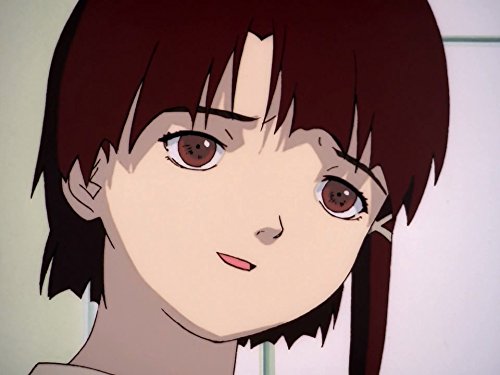I posted this as a comment on the last episode of Lain on some site about a year ago, later to see it was removed for allegedly being a spam. The chatGPT stuff from before reminded me of it so I went to fetch it:
Ok, so this is my second watch, so here’s what I got out of it. It should be noted that I only have a very shallow understanding of Christianity, Gnosticism, idealist philosophy and the internet. I don’t know if this is enough to understand this anime, but I’ll try.
First off, we can all see the biblical symbolism of this anime : Lain is basically the Christ : She is from an ideal world (ideal in the sense of idealist philosophy, which is to say “may of pure idea”, as opposed to the material world). She is sent to the material world with the purpose of bringing humans away from the corruption of the flesh and towards the ideal. Here, the ideal is what they call the subconscious link which connects humanity. The wired (which is pretty much the internet) is just a way to lead people to that ideal; it connects people via machines, but once they are truly connected, the connection can persist directly between souls and neither the machines or even the bodies are necessary anymore.
Masami Eiji therefore pushes towards that : The total forfeit of the material world in favor of the ideal world. Therefore, he wishes Lain to act as Jesus not in his first coming, but in his second coming, the Apocalypse.
But then it gets interesting…
Shunning the material world and praising the ideal is present to some extent in Christianity; and was taken the furthest by one of it’s early, now extinct version : Gnosticism. I’ll explain it fast : Basically, the supreme God and the Demiurge (creator of the world) are two very separate entities, respectively called Monad and Yaldabaoth. Monad exists in a world called “Pleroma”, which could be translated as “Plenitude”, along with the eons, which are just alternate aspects of himself. Yaldabaoth was created by accident by one of the Eons. It was imperfect, and therefore banned from pleroma, so it then created a world for itself outside of it. That is the world we are born in, but we have the possibility of becoming ideal and going back to Pleroma, and Monad sent the Christ and the Holy Spirit to guide us there.
The Gnosticist mindset is clearly the one held by Mashima Eiji. He wishes to take the role of the Holy Spirit and have Lain take the role of the Christ.
But the words of Alice convince Lain to reject that role : She realizes the physical world is precious as it is and decides to leave it intact.
I think the father she the sees is therefore akin to the Father in the holy trinity (or Monad). The sentence"You love them, don’t you" means he understands her desire to leave the world as it is and acknowledges that there might be worth in the physical world.
In a way, it explores the same themes as Evangelion, and I think there is some inspiration from it. It just has a different take on similar themes, and I think it’s complementary to it in some ways.
I didn’t really explain what Lain was… I’m not sure I perfectly understand it myself, but I think Mashima Eiji did create her, as a vessel for a part of the souls that is common to every human… I’m not sure what part tho… Is she the incarnation of specific emotion common to all humanity ? Or rather an amalgamation of different emotions from everyone ? I don’t know.


Let me clarify a bit. If you’ve seen the matrix you may realize that it is a reflection of Vedanta. A Christ oriented person would say it was Gnosticism and that’s because both share the same perennial philosophy. Either comparison would be correct and both are useful depending on who is utilizing the metaphor.